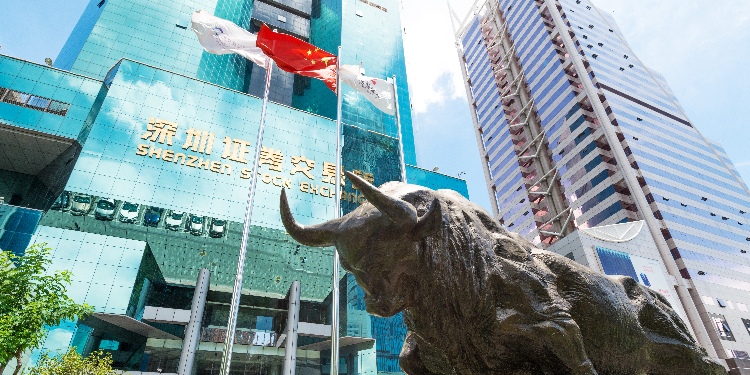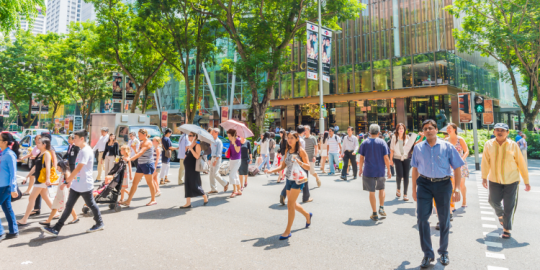The world's largest middle class
By replacing industrial jobs with service-sector jobs and through movement from rural to urban areas, China's middle class is expected to expand to about 65% of its households and the annual income is expected to grow at around 5% over the next decade, elevating 180 million families to a higher income bracket. As a result, Chinese consumers will have more significant spending power, and the consumption will grow two times more compared to what it is today, while savings rates will decrease to 30%. The population's spending habits will also change; people will spend more money on luxury goods, education, recreation, and transport to earn pleasure, social status, and self-identity through consumption rather than to satisfy basic needs.
A growing elderly population
It is estimated that by 2027, 324 million Chinese will be over the age of 60, accounting for 22% of the country's overall population. China's population is ageing at a fast pace, meaning that the working-age population is decreasing, while social benefits are in high demand. However, China's elderly present an economic opportunity too — there will be a rising demand for products and services, which are targeting this demographic, and therefore more money will be spent on health-related products and services such as medical treatments, supplements, insurance, and senior housing.
The expectations of Millennials and Generation Z
In 2027, Chinese born in the 1990s will comprise 15% of China's population, and those born in the 2000s will comprise 21%. Millennials and Generation Z grew up by receiving substantial financial support from their family and during a time when the quality of life was rapidly and meaningfully improving through technology and digitalisation. But how do younger generations affect China's business and economy? Millennials and Generation Z have unique spending characteristics — they consume at a higher rate than their parents and grandparents, have higher quality standards, are less price conscious, are more open to new things, and search for variety. Thus companies will have to develop premium and personalised products to meet these young people's needs. Also, China's youth is the direct beneficiary of the recently launched second-child policy; by 2027 China will have more multi-child families, which will look for specific products and services such as housing, childcare, and education.
A thriving sharing economy
The sharing economy in China is already well-established (as it is in the rest of the world); however, through institutional innovations, it is estimated to grow at an annual rate of 40%, and to account for 20% of China's GDP by 2025, according to the National Information Centre. Chinese consumers have incorporated the sharing model in their everyday lives (e.g. bicycle and taxi sharing), benefiting from accessibility and lower costs, and are ready to shift from sharing cars and holiday rentals to sharing appliances, apparel, and even knowledge. Today, China hosts the most sharing economy startup unicorns (privately owned companies valued at over one billion dollars) in the world.
Reshaping retail through online purchases
In 2016, 15.5% of Chinese's total retail purchases were online and 12.6% of their physical goods purchases. In the next ten years, retailers will achieve a broader reach via online channels, and with the help of technology (e.g. augmented reality, AI, drones, etc.) the retail industry in China is expected to be reshaped, delivering an upgraded shopping experience. Online marketplaces will provide their goods via e-commerce to rural areas, and smaller providers will join big online platforms to promote their products and enter the market. In 2017, half of the Chinese consumers used cash for only 20% of their monthly purchases, and by 2027 it is expected that almost all daily transactions will happen via mobile devices, and will, therefore, be digitally traceable.
Towards a personalised consumption and the value of data
Colossal technology and digital public companies such as Apple, Microsoft, Amazon, Facebook, and Alibaba capture and own terabytes of data. However, this data can be more insightful, if shared and integrated properly. It is estimated that by 2027, in China, fewer than five companies will control most consumers' data, and will extract, process, refine, value, buy, and sell this information. Data is becoming the new oil, and companies which have control over data will be some of the most influential players in the global economy. While these companies will be substantially profiting from the new norm, consumers will be receiving personalised services and goods for a more convenient living.
The new course of urbanisation
In 2016, 57% of China's population resided in urban areas, and by 2027, it is estimated that the number will reach 70%. However, future urbanisation will have a different form from what it currently does — the Chinese government will direct urbanisation away from saturated coastal megacities and towards newly established economic hubs, such as Xiong'an New Area and the Yangtze River Delta City Cluster. High-speed trains will make transportation faster, and internet connectivity will encourage online learning and remote employment, as well as online shopping. Consumers in these new urban centres will have similar advantages with those who live in the megacities, but they will also enjoy a lower cost of living, less pollution, and more recreational space.
Westernised vs Chinese lifestyle
Today, there's not a clear preference among the Chinese population towards a merely westernised or Chinese-focused lifestyle — it's more of a 50/50 situation. According to the predictions, this is not likely to strikingly change over the next ten years, and Chinese people will continue to balance between the two cultures, leaning more or less toward one or the other depending on their income, generation, and location. Whereas affluent Chinese are more exposed and have more access to the Western lifestyle, the government continually promotes activities to popularise tradition and national education and has no intention of changing this practice. In general, Chinese consumers who prefer a Western lifestyle tend to save less, spend more, and rely more on the media when making purchase decisions. China is more open than ever to the world, and it isn't only being affected by the Western world; it also exports its culture to the West and creates trends.
Sources :
- The World Economic Forum : https://www.weforum.org/reports/future-of-consumption-in-fast-growth-consumer-markets-china
















